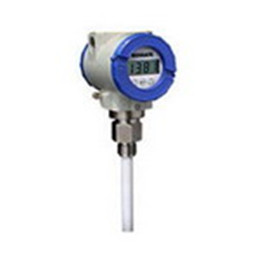The split type ultrasonic level gauge has the characteristics of safety, cleanness, high precision, long life, stable and reliable, convenient installation and maintenance, etc. It is suitable for various fields such as acid, alkali, salt, anti-corrosion and high temperature. Real-time level data can be provided for industrial automation operations.
Separate ultrasonic level gauge installation precautions:
1. It is recommended that the meter be reliably connected to the earth, that is, the end of the 4-20 mA or the end of the XPS is connected to the earth.
2, wire, cable protection tube, should pay attention to seal to prevent water accumulation.
3. Although the liquid level gauge itself has lightning protection devices, when the instrument is used in the multi-lei area, it is recommended to install a special lightning protection device at the inlet and outlet ends of the instrument.
4. The liquid level gauge is used in a particularly hot and cold place, that is, when the ambient temperature may exceed the working requirements of the instrument, it is recommended to add anti-high and low temperature devices around the liquid level meter.
Split-type ultrasonic level gauge installation principle:
1. The distance from the emitting surface of the probe to the lowest liquid level should be less than the range of the optional instrument.
2. The distance from the emitting surface of the probe to the highest liquid level should be greater than the blind area of ​​the optional instrument.
3. The emitting surface of the probe should be parallel to the surface of the liquid.
Capacitive level gauge JZ-ORB
I. Overview
Capacitive level transmitters are suitable for continuous level measurement of containers, tanks, silos or hoppers containing liquids, solid particles. This product has been successfully applied to automatic level testing systems for petroleum, chemical, power generation, food, water treatment, metallurgy, cement, etc. due to its harsh environment and high reliability.
Second, technical indicators
1 converter section
Power supply: 12 ~ 36V DC.
Input range: 10~4000pf
Output signal: 4 ~ 20mA DC. (two-wire system)
Accuracy: ±0.5% F·S
Load resistance (W): (Vs-12) / 0.02, where Vs is the supply voltage
Temperature effect: 1%/50°C of full scale
Power supply variation: up to 0.2% (supply voltage varies from 12 to 36V)
Load impact: 0.2% (24V power supply)
Ambient temperature: -20 ~ +80 °C
2 sensor part (probe)
There are many situations in the level measurement. For example, the measured medium can be divided into conductive and non-conductive media; the container also has conductive and non-conductive containers; there are pressurized containers and non-pressure containers; the inside of the container is normal temperature or high (low) temperature; the medium may be corrosive or non-corrosive. Media; connection form is threaded or flanged; range is as small as tens of centimeters, as large as tens of meters and so on. In order to adapt to such diverse practical use, the probe has many forms.
The probe form can be divided into rigid and flexible according to the mechanical structure; it is divided into insulation probe and bare probe according to electrical performance; insulating material is covered with insulating material such as PTFE (polytetrafluoroethylene); installation method has pipe thread connection and flange connection .
Third, the problem should be paid attention to when selecting or using
a) The instrument is in accordance with the process conditions, including temperature, pressure, compatibility of structural materials and media.
b) Since the sensor measures capacitance, the dielectric constant is directly related to its sensitivity. When the dielectric constant is less than 5 μs/cm, the measurement difficulty increases. At this time, a coaxial sleeve (B type) capacitance probe is recommended. Note that this type of probe is only suitable for liquid media.
c) Reliable grounding of the transmitter housing to the vessel wall is very important. For liner or non-conductive containers, a metal rod or coaxial sleeve is required to provide a ground reference electrode to the probe.
d) The instrument requires on-site calibration. When the calibration is required, the site can be raised or lowered.
e) The conductive medium remaining on the probe may cause an erroneous output, which is not the case with non-conductive media.
f) When measuring non-conducting media, it is important to ensure that the media has a stable dielectric constant. The dielectric constant change of the medium is usually caused by the following reasons: adding other medium, moisture absorption of dry matter, temperature change of the medium, and the like. These factors can significantly affect the accuracy and performance of the meter. If this happens, the meter needs to be recalibrated. For conductive media, the temperature change of the medium has no effect on the measurement results.
g) Strictly calculate the size of the fully insulated electrode before ordering, and do not allow the electrode to be cut at will.
h) If the medium temperature exceeds 100 ° C, it should be stated when ordering.

Picking up fruit and vegetable is also a knowledge to learn. Some fruit and vegetable are better handled, while others require peeling, nuclear work, etc., which is more troublesome. So they will require some tools to help.
The use of these tools to deal with the fruit and vegetable, in addition to the convenience, and more importantly, the powerful processing function, allows us to have more space to eat the fruit and vegetable, let it no longer limited to eating directly or cutting fruit and vegetable.

Vegetable Fruit Tools,Vegetable Tools,Vegetable Gadgets,Fruit Gadgets
Fortary Industry&Trading Co., Ltd. , https://www.kitchenset.de